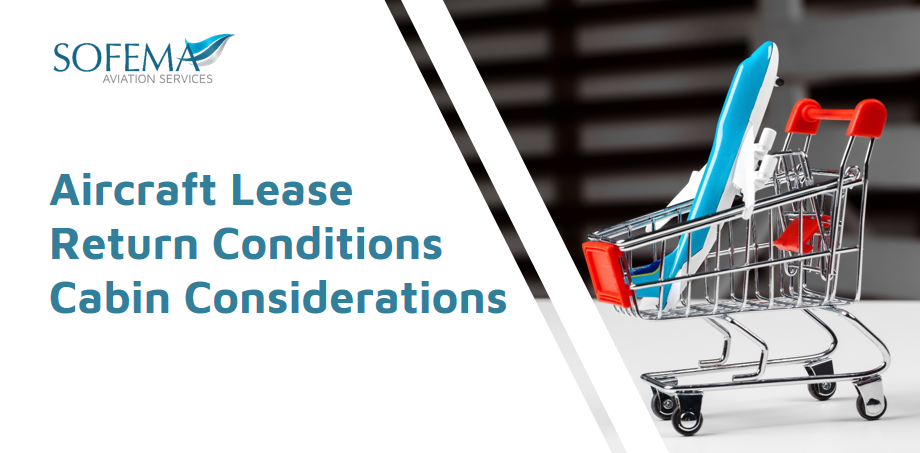Best Practice Review by Sofema Aviation Services (SAS) www.sassofia.com
Introduction
Lost time during the end of lease or transition from one lessee to the next can be traumatic and costly for either the lessee or lessor or both!
A planned and well-executed aircraft lease return will be time-consuming, costly, and technically challenging (If it goes well!) and any overruns may be extremely costly.
If the lease return is because of operator difficulties (usually financial) the asset may be non-performing for a potentially unknown period of time.
Note – An airline which has been in difficulty is looking for opportunities to minimize maintenance costs and one area where this can be safely done is the cabin!
Aircraft Cabin Interiors – Potential Concerns
- Insufficient attention paid to this very important area leading to many small but valid defects
- Certification of Material Issues – Burn Certification Acceptability
- Ambiguous Lease Terms for example ‘fair wear and tear’ which is very subjective and seen by different people in different ways (i.e. the Lessee and Lessor)
- Difficulty in reaching a consensus becomes very challenging
- Accepted by Industry Practitioners as one of the most challenging areas of the aircraft to deliver with cost and on time
- Long lead times for replacement Parts (OK to repair not replace – yes/no?)
- Insufficient time – creates a pressure point and potential obligation to accept “as is”
- Issues which remain unresolved can create problems for the lessor and bring a difficulty to the process of finding the next lessee. Moreover, any substandard situation in the cabin will clearly become a bone of contention with the potential future operator
Where it all Starts to Unravel!
Many Lessees will expect to reconfigure the cabin at initial acceptance to provide commonality with fleet standards, this may include significant modification action with only local acceptance of Burn Certification. This can easily cause disputes and complicate the return process.
Note – whilst lease agreements require prior notification and acceptance related to modifications with a certain threshold value this requirement is overlooked and becomes ultimately a major headache for both parties.
Case Study – Example
The operator had modified significantly a zone on a wide-body aircraft throwing a great deal of original cabin parts and material into the trash.
The Lessor did not accept any of the modifications during the Lease return obliging the operator to repurchase many cabin items at full cost – delaying the aircraft return and incurring additional lease penalty payments.
How to Mitigate – Delivering Remedial Actions
- Ensure the earliest possible engagement to pre-plan the lease return
- Make sure that you calculate the required manpower to ensure a timely completion
- Understand in detail the Repair History and Dent & Buckle Status so every situation is accepted or addressed in a timely manner
- It is of paramount importance to ensure a full understanding of all requirements, conditions, and clauses within the lease and that this process takes place at the earliest possible opportunity
Next Steps
Forthcoming Training in Dublin: www.sassofia.com/course_category/ireland
6 December to 10 December 2021 at WYNNS HOTEL Dublin
- Managing Aircraft Lease Agreements and Maintenance Reserves – 3 Days – Dublin, Ireland
- Technical Records for Aircraft Lease Management – 2 Days – Dublin, Ireland
Email team@sassofia.com for Early bird and Multi delegate discount information.
Tags:
Aircraft Lease, Technical Records, SAS blogs, Aircraft Cabin, Maintenance Reserves, Aircraft Lease Management




